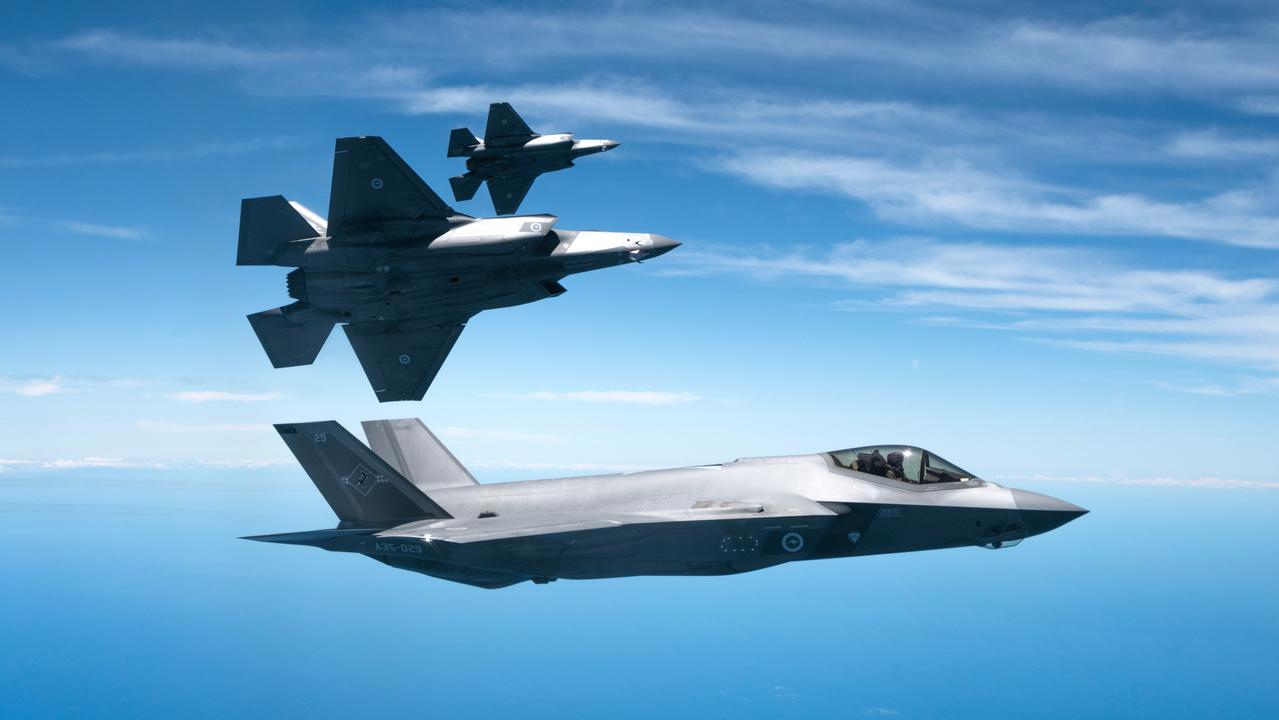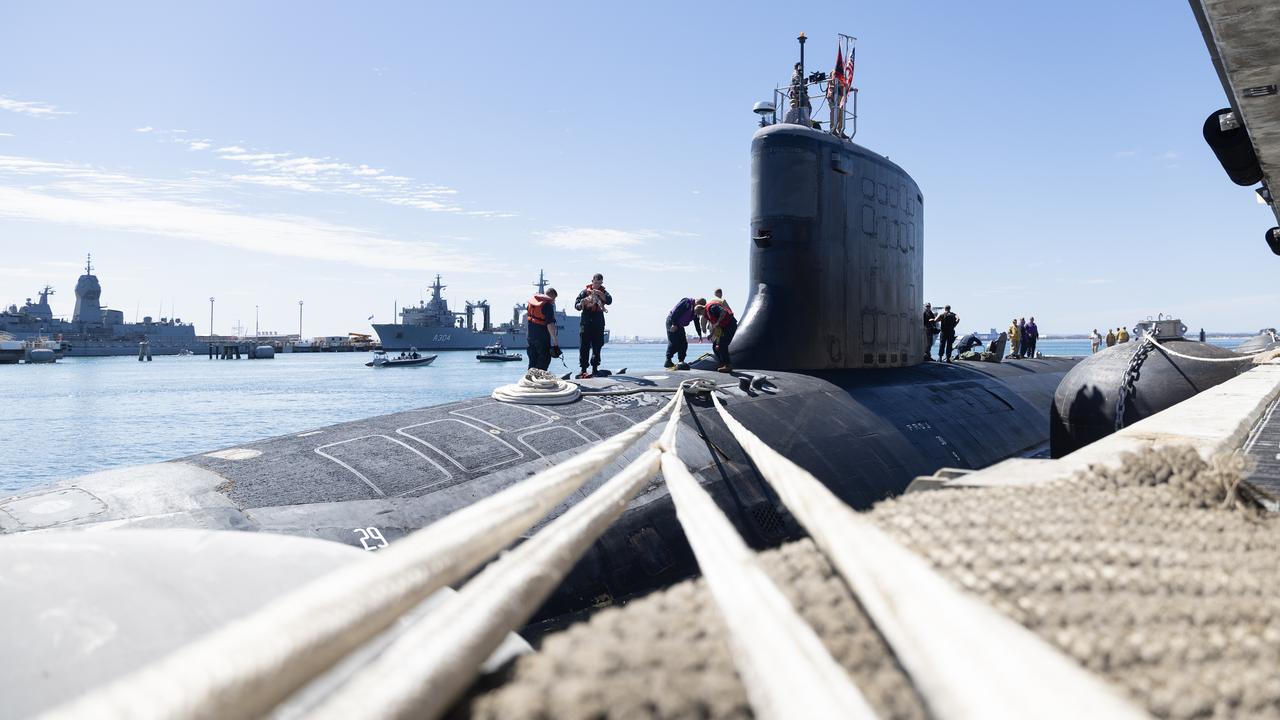Do we have a viable military strategy?
With three major policy statements to digest, Defence has a major challenge ahead.

With the Albanese government’s adoption of the Defence Strategic Review, Australia’s defence strategy has become more focused. Instead of maintaining a defence force that can do a bit of everything, the focus is now squarely on deterring potential Chinese aggression in our near region. That will require robust new military capabilities at the expense of existing and previously planned ones. That’s the right approach for our strategic circumstances, but there’s a mismatch between aspiration and resources; with no new funding in the defence budget there’s no plan yet to deliver that more potent force.
Despite the government’s statement that this is the biggest change to defence policy since the 1980s and a departure from the Defence of Australia doctrine, there is significant continuity here. The DSR aims to defend Australia through a deterrence by denial approach, that is, to employ anti-access/area denial capabilities to prevent an adversary projecting power against Australia through our northern approaches. Our northern bases will be enhanced to support the operation of air and maritime forces.
These are actually the key elements of the Defence of Australia doctrine set out by Paul Dibb in the 1980s. As we learned from Ed Sheeran’s copyright infringement case, there are only so many chords you can use in music, but you can generate thousands of songs with them. Similarly there is a standard corpus of concepts Australia’s strategic vocabulary, but you can mix and match them in different ways. Much of the DSR is a new presentation of the standard four-chord banger.
The DSR’s emphasis on a whole of government and whole of nation approach to national defence, employing statecraft and enhancing national resilience, similarly seems to echo previous lyrics in this genre. Until we see how exactly the full spectrum of national power will be brought to bear, it’s hard to see what’s different here.
Nevertheless, this new version of the defence of Australia has significant differences in tone. It’s not surprising that one of the chords in the DSR is the centrality of the US alliance to our security. But Australia has also voiced a steadily rising ambition in what we aim to achieve alone.
The 2009 Defence White Paper regarded a contingency in which Australia had to deter a major power alone as a different world. By 2020, the Defence Strategic Update acknowledged that we had entered that world and Australia needed to take greater responsibility for its own security. While we couldn’t match a great power adversary the Australian Defence Force needed to grow its self-reliant ability to deter.
The DSR goes well beyond that stating, “Australia… needs to develop the capability to unilaterally deter any state from offensive military action against Australian forces or territory”. Note the word “any”; by definition that includes a hostile great power. There’s little explicit discussion of who that might be. But our narrative trajectory since 2009 matches the rise of China’s power and its willingness to use it coercively. It’s not surprising that there is little mention of China considering the government’s effort to rebuild trade with China. But there’s no doubt this is about China.
But how does a middle power deter a great power? There the DSR employs a chord that has been out of favour with our strategic songwriters and, indeed, one that is dissonant to many ears.
Traditionally the ADF has been structured as a balanced force. As the 2009 White Paper put it, “Defence must have the capability… to meet [a] broad range of contingencies. Australia cannot afford to equip, train, and prepare our military forces solely for the unlikely event of a major attack on our territory”.
But states facing clear threats from powerful adversaries don’t have the luxury of preparing balanced forces to meet every conceivable contingency; rather they focus on the obvious one. The DSR states that the ADF’s balanced force model is based on a bygone era and is not fit for purpose. Rather Defence needs to develop a focused force structure. What we couldn’t imagine doing in 2009 is what we are doing now.
Unfortunately the public DSR provides little detail on what this focused force looks like, other than confirming we are getting SSNs.
On the surface fleet, there is only a thought bubble that we should move to a larger number of smaller vessels, but no discussion of why or how we would do that when the bulk of the maritime acquisition budget is tied up in submarines and the Hunter frigates. Similarly, the army is getting fewer armoured vehicles, but what its role will be in this focused force in our northern approaches is largely left unstated.
The government has also released the broad outlines of its plan to acquire SSNs through the AUKUS partnership. Nuclear-powered submarines have strong supporters, strong opponents, and those (like me) who can see the capability they provide but considering the schedule and opportunity cost involved remain strongly agnostic.
The fundamental capability question is, if we are now moving to a force focused on denial in our northern approaches, why do we need a capability that can project to northern Asia? Are we trying to deter China close to Australia or close to China? That’s a question that for the sceptics has not yet been convincingly answered.

Moreover, SSNs will inevitably lead to a more focused force for the simple fact that their sheer cost will move the ADF away from a balanced force. The government has argued that they will cost less than 10 per cent of the Defence budget. That’s still more than twice what the Collins do. But since the SSN fleet will have four times the tonnage and three times as many submariners as the Collins, an extensive nuclear infrastructure, and a massive continuous build program, they could cost four times as much as the Collins fleet (in current day dollars). That’s more than 15 per cent of the Department of Defence’s budget; the entire Navy is currently 20 per cent of its budget.
In short, we can’t afford to have a mature SSN capability and a continuous shipbuilding enterprise and still afford everything else currently in the ADF without increasing the defence budget to a level that the government has not yet committed to.
Before the DSR, Defence was already facing serious budget pressures. First, it was having trouble fitting an ambitious program of new and significantly enhanced capabilities into a funding trajectory that hadn’t been updated since the 2016 Defence White Paper. Second, new calls had been made on that funding line, such as a massive transfer to the Australian Signals Directorate. Third, inflation was eating into Defence’s buying power, potentially reducing it by 10 per cent. And, finally, no provision had been made for the additional cost of SSNs above the conventional submarine program.
The DSR’s more focused military strategy makes sense in light of our current strategic environment, but there’s still a lot of work to be done to develop an affordable plan to put that strategy into practice.
The DSR noted that the defence budget was already overstuffed – and then injected a range of new priorities into the four years of the forward estimates, such as enhancing northern base infrastructure and accelerating the development of a domestic guided weapons industry. The DSR is thin on details, but these appear to cost $7.8bn more.
One might assume that this year’s defence budget might have resolved the funding challenges of this new focused force, particularly since the DSR team was charged with telling the government what funding would be needed to deliver the defence force we require.
Alas, that is not the case. The budget statements show that there has been no increase to Defence’s funding trajectory. Moreover, more new calls have been made against that funding line such as $924m in Pacific engagement and $632m in efficiency dividends. The available funding envelope is becoming smaller while more is being shoved into it.
In essence the government has two priorities that will be very hard to reconcile. It has prioritised large shipbuilding programs that will take decades to deliver, meanwhile it wants Defence to deliver other capabilities faster while tens of billions of acquisition dollars are locked up in those maritime mega projects.
The key takeaway from the budget is that Defence has not yet worked out how to square that circle. The defence budget is already out of date since it reflects the situation prior to the DSR. The budget papers note that the department will spend the next year undertaking that arduous work. But it’s hard to see how it can do it without cutting large programs that are built into its existing plans. Defence industry has already endured a year of uncertainty since the election, but that will continue over the coming year.
Underlying this is Defence’s people problem. The budget shows it’s getting worse with the gap between actual numbers and those needed to operate its capabilities growing every year. Arguments about force structure are academic if you can’t crew your equipment.
In sum, while we’ve had three major strategic policy statements, Defence hasn’t yet aligned them. The DSR’s more focused military strategy makes sense in light of our current strategic environment, but there’s still a lot of work to be done to develop an affordable plan to put that strategy into practice.
-
Dr Marcus Hellyer is head of research at Strategic Analysis Australia.


